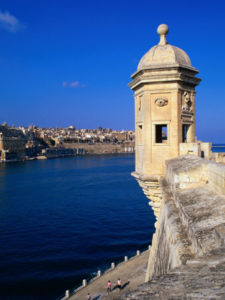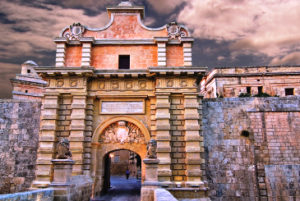
Malta’s Mediterranean Magnet
Malta’s Mediterranean location has made it irresistible to outsiders over the centuries. But now the island welcomes the waves of overseas visitors with open arms rather than valiantly trying to repel them. Just three hours’ flying time means Malta is near enough to be a good alternative to the Costas for families looking for an easy-going sunny holiday.
Being a Mediterranean country the way of life is relaxed and family friendly. The lion’s share of life revolves around the pools and beaches and there are a variety of themed parks, from a water world to a dinosaur park and a marine park with dolphins and parrots. Malta is also increasingly upping the quality of its offer to appeal to couples or groups of friends who are looking for more sophisticated holiday entertainment, quality accommodation, dining and nightlife. But the marvellous climate is Malta’s greatest attraction and from late spring until early winter you can count on sunny days while at the height of summer soaring temperatures.
Spring is the best time to avoid the crowds, enjoy the carpets of pretty wild flowers and explore in comfortable temperatures. While the island’s capital and the bordering bays are lively all-year round, the specifically holiday resorts such as those along St Paul’s Bay such as Qawara and very lively Bugibba, are still in hibernation, waiting for the rising temperatures to waft in the holiday makers.
English is widely spoken and the island has long been a favourite from this much chillier island of ours. Tourism is well catered for whether you want happy hour bars, cafes serving familiar food, water sports and beach fun or a quiet escape in a tranquil village. But the island is so small that wherever you opt for your base, anywhere can be visited either on organised day trips, public transport or hiring a car at rates that are amongst the cheapest in Europe.
You are sure to find yourself visiting Valetta, Malta’s pint-sized capital built on a remarkable natural harbour that also dictated the island’s two big moments in history; the Great Siege in 1565 and its heroic part in World War II for which the island itself earned the George Cross. The Ottomans and Nazis tried to break the will of the island over four centuries apart and win control of this strategic island and that natural harbour. Nowadays the remnants of those conflicts bring thousands of visitors to soak up the history from the sumptuous cathedral and palaces of the Knights of Saint John, a force of Crusaders who moved to Malta after Rhodes was lost to the Ottomans, to Second World War command centres, monuments and military and naval museums.
Valetta
Mdina
Most accommodation in striking distance of Valetta is found along the bays that run to the west, particularly around St Julian’s Bay, Spinola Bay and St George’s Bay. Spinola is the most beautiful bay on the island with the fishing boats bobbing in the water and is surrounded by every sort of restaurant taking advantage of the views across the bay. You could be forgiven for thinking you were actually in say Sicily as most restaurants seem to be Italian – but Maltese food does survive so be sure to try the local speciality of a tasty rabbit stew or the local version of beef olives called Bragioli.
Fish is always on the menu but if you want to eat fresh from the sea at reasonable prices head for Marsaxlokk Harbour. About 40 percent of the vessels registered in Malta operate from here and the simple open air restaurants that line the harbour have prices way cheaper than what you would pay at night time in the restaurants around Valetta. Even with the Euro at such a poor rate against Sterling, prices in Malta are very reasonable and unlike some Eurozone countries you won’t faint with shock if you orders drinks in a bar or go out to dinner. Many of the larger hotels offer their own entertainment which means you can have some fun even if you have the kids with you.
If you are on a child free holiday the restaurants and bars are wide ranging from cheap and cheerful, loud and boozy in certain zones to as chilled and sophisticated as you could desire. At the height of the summer the larger resorts are buzzing and even in spring the bars of Paceville, the main entertainment area for St Julian’s Bay and St George’s Bay, are busy with foreign language students and locals and are pleasantly buzzing without large numbers of sun seekers.
Apart from that trip into Valetta you could just spend the holiday by the beach or the hotel pool. But if you want some stimulation it is well worth venturing further to appreciate other parts of Malta by organised day trips, public transport or hire car as nowhere is more than an hour’s drive. You could combine that trip to Marsaxlokk with a visit to some of the earliest Neolithic sites in the world such as at the intriguing temple ruins at Hagar Qim. A popular excursion is to the old walled citadel at Mdina. Also, known as the Silent City, the ancient capital of Malta is a fortified citadel that was established by the Arabs and is a living monument of architectural styles across the centuries boasting heavily built walls, shaded narrow streets lined with imposing lined with imposing Norman and Baroque that seems to have been frozen in time. It is a stroll then to Rabat where the main draws are the ancient catacombs and a cave where St Paul is reputed to have preached after being shipwrecked on Malta.
We hired a car for just three days and saw large parts of the island. On the third day we even took the car on a ferry to neighbouring Gozo for a day on the even smaller island and still managed to get back to the Valetta before sunset.

